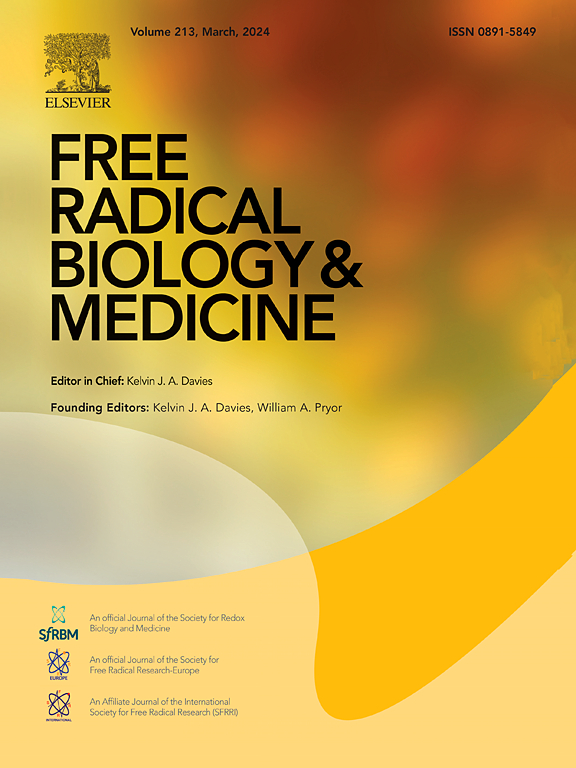Endoplasmic reticulum stress-autophagy axis is involved in copper-induced ovarian ferroptosis
IF 7.1
2区 生物学
Q1 BIOCHEMISTRY & MOLECULAR BIOLOGY
引用次数: 0
Abstract
Copper (Cu) contamination has emerged a global public health problem due to the extensive use of Cu in industrial production and daily life. Reproductive damage resulting from Cu exposure has been particularly evident. Wilson's disease (WD) is a recessive genetic disease characterized by impaired Cu metabolism. Female WD patients have often been associated with reproductive impairment. Ferroptosis, a form of iron-dependent regulated cell death, has been identified as being caused by massive lipid peroxide-mediated membrane damage. However, it remains unclear whether ferroptosis is associated with Cu-induced ovarian damage. In this study, the role of ferroptosis in ovarian damage induced by Cu accumulation and its underlying mechanisms were examined through both in vivo and in vitro experiments. The findings indicated that excessive Cu deposition in the ovaries could lead to follicular atresia and ovulation dysfunction, and trigger ferroptosis in ovarian and granulosa cells (GCs). The mechanism may be related to endoplasmic reticulum (ER) stress mediated by the protein kinase RNA-like ER kinase (PERK) pathway, and hyperactivation of autophagy. In addition, Cu-induced autophagy in GCs was found to increase intracellular iron levels via the ferritinophagy pathway, thereby inducing ferroptosis. We also found that mitochondrial reactive oxygen species (MitoROS) may be an onstream facilitator of Cu-induced ferroptosis via activation of the ER stress-autophagy pathway. Our findings suggested that ferroptosis is associated with Cu-induced ovarian damage and is regulated by the MitoROS-ER stress-autophagy axes. These results might provide insights for developing treatment for WD and other diseases related to Cu exposure.

内质网应力-自噬轴参与铜诱导卵巢铁下垂。
由于铜在工业生产和日常生活中的广泛使用,铜污染已成为一个全球性的公共卫生问题。铜接触造成的生殖损害尤为明显。威尔逊氏病(WD)是一种以铜代谢受损为特征的隐性遗传病。女性WD患者常伴有生殖功能障碍。铁下垂是一种铁依赖性调节细胞死亡的形式,已被确定是由大量脂质过氧化介导的膜损伤引起的。然而,尚不清楚铁下垂是否与铜诱导的卵巢损伤有关。本研究通过体内和体外实验,探讨了铁下垂在铜积聚性卵巢损伤中的作用及其机制。提示卵巢内过量的铜沉积可导致卵泡闭锁和排卵功能障碍,并引发卵巢和颗粒细胞(GCs)的铁下垂。其机制可能与蛋白激酶rna样ER激酶(PERK)途径介导的内质网(ER)应激和自噬过度激活有关。此外,cu诱导的GCs自噬通过铁蛋白自噬途径增加细胞内铁水平,从而诱导铁凋亡。我们还发现线粒体活性氧(MitoROS)可能通过激活内质网应激自噬途径,促进cu诱导的铁死亡。我们的研究结果表明,铁下垂与铜诱导的卵巢损伤有关,并受MitoROS-ER应激自噬轴的调节。这些结果可能为开发与铜暴露相关的WD和其他疾病的治疗方法提供见解。
本文章由计算机程序翻译,如有差异,请以英文原文为准。
求助全文
约1分钟内获得全文
求助全文
来源期刊

Free Radical Biology and Medicine
医学-内分泌学与代谢
CiteScore
14.00
自引率
4.10%
发文量
850
审稿时长
22 days
期刊介绍:
Free Radical Biology and Medicine is a leading journal in the field of redox biology, which is the study of the role of reactive oxygen species (ROS) and other oxidizing agents in biological systems. The journal serves as a premier forum for publishing innovative and groundbreaking research that explores the redox biology of health and disease, covering a wide range of topics and disciplines. Free Radical Biology and Medicine also commissions Special Issues that highlight recent advances in both basic and clinical research, with a particular emphasis on the mechanisms underlying altered metabolism and redox signaling. These Special Issues aim to provide a focused platform for the latest research in the field, fostering collaboration and knowledge exchange among researchers and clinicians.
 求助内容:
求助内容: 应助结果提醒方式:
应助结果提醒方式:


